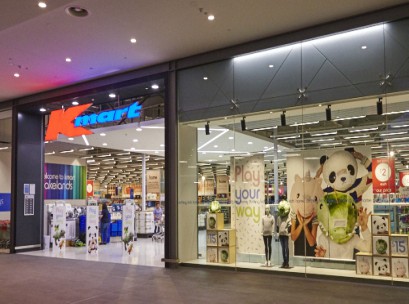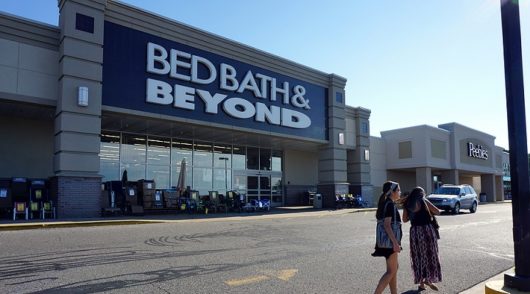 Despite heading up one of Australia’s most successful retail companies, Kmart managing director Ian Bailey remains fundamentally dissatisfied with the discount-department store chain’s ability to meet evolving customer expectations.
Despite heading up one of Australia’s most successful retail companies, Kmart managing director Ian Bailey remains fundamentally dissatisfied with the discount-department store chain’s ability to meet evolving customer expectations.
“We are failing to deliver on what customers really want,” Bailey told an audience at a Property Council of Australia business breakfast in Sydney.
“They want more information from us, they want a super shopping experience, they want better products, and they want lower prices – pretty much they want the lot.”
While retailers are investing heavily in new business models, Bailey argued that the sector isn’t adequately responding to change as well as other industries, where companies like Uber and Netflix have redefined the competitive landscape.
“Unfortunately [customers] are getting it from other people, that sounds like a ridiculous statement, [but] they are receiving it in other areas, and in the retail industry I don’t think we’re adequately responding to those demands,” he said.
Bailey’s comments come at a time of success for Kmart, which after emerging from a turnaround program several years ago has cemented itself as a price leader, garnering a loyal following of bargain hunters on social media.
Parent company Wesfarmers will report Kmart’s half-year sales next week, although after achieving 9 per cent growth in the first quarter the result is expected to be again positive for the chain.
But Bailey, who aspires to double Kmart’s sales in the coming years, said the ongoing dissatisfaction of the Kmart team has been a crucial part of achieving continuous improvement amid worsening market conditions.
“We’re in a category or format which locally is seen as being doomed,” he said.
“You don’t read too many articles about what a wonderful future department stores have.”
“Even though there’s population growth within the country, by the time you take the new store openings, new entrants [and] new online players out, most of our stores, if we did nothing, would probably go back by 1-2 per cent a year,” Bailey explained.
“We know this time next year if we want to run 10 per cent sales growth, which is always our aspiration, we’ve probably got to be somewhere like 12 – 15 per cent better than we are this year – we can only do that if we are dissatisfied.
“That’s harder to do as an organisation than when you are right at the bottom…changing something that works is a difficult task,” he said.
Evolving expectations
Bailey described customers researching online before going into store, which between 30-70 per cent of customers do these days, and an expectation that services like click-and-collect can be fulfilled instantly, as key challenges for meeting consumer expectations.
Kmart, like most retailers, has also had to deal with broad based change in customer service processes with the advent of social media, which has turned once private complaint channels into public forums.
“If we have an issue with a customer we can no longer go through the ‘normal processes’…we have to be instantaneous in our response, they no longer come at us with lawyers, they’re just blasting us all over social media, damaging the brand that way,” Bailey said.
In its journey to becoming a market leader Kmart has also had to change its product philosophy, moving from following in the footsteps of specialty retailers to matching them on the latest trends.
“Historically we tried to be first to be second…we just waited for the trends to arrive and jumped in on the back of it.
“[But] you disappoint the customer, all you’re showing them is stuff they’ve already seen. Newness is very important, Australians respond extraordinarily well to new things.
“We can’t be first to be second…we now try to get the trend when the specialty retailers go, but in volume, and through that volume we can hit price – we get a massive halo from that and it all came from understanding why customers are shopping with us,” Bailey explained.
Kmart has no plans to sacrifice its price leadership, Bailey signalled ongoing investment in driving down prices as the foundation of the company’s offer as an every day low price (EDLP) retailer.
Kmart’s average sell price is just $6, but Bailey explained that this hasn’t stopped shoppers from researching what they’re coming into buy or expecting the business to participate in promotional holidays such as Black Friday and Cyber Monday.
“How do we play in a discount event as an EDLP retailer? If customers are swarming to a location we can’t just say, we’ll leave it for everybody else…it doesn’t work, we’ll sacrifice too big of a share of the market,” Bailey said. “How do we play in those events as they evolve? I’m pretty sure Black Friday and Cyber Monday will be even bigger next year, and if they are the two weeks following are going to be smaller – that’s a big shift for us.”
He said customers now not only “have the power”, but also have close to perfect information about product and price through their phones – and that this was ultimately something that all retailers will need to increasingly deal with.
Access exclusive analysis, locked news and reports with Inside Retail Weekly. Subscribe today and get our premium print publication delivered to your door every week.





